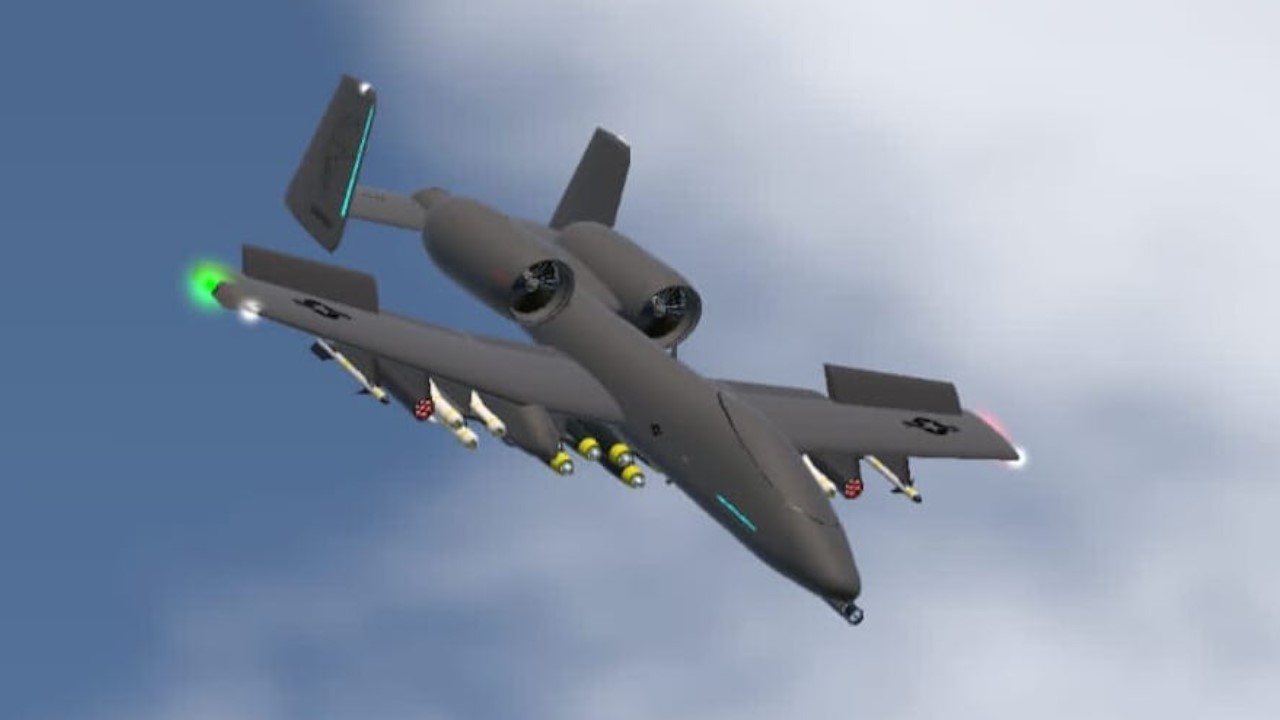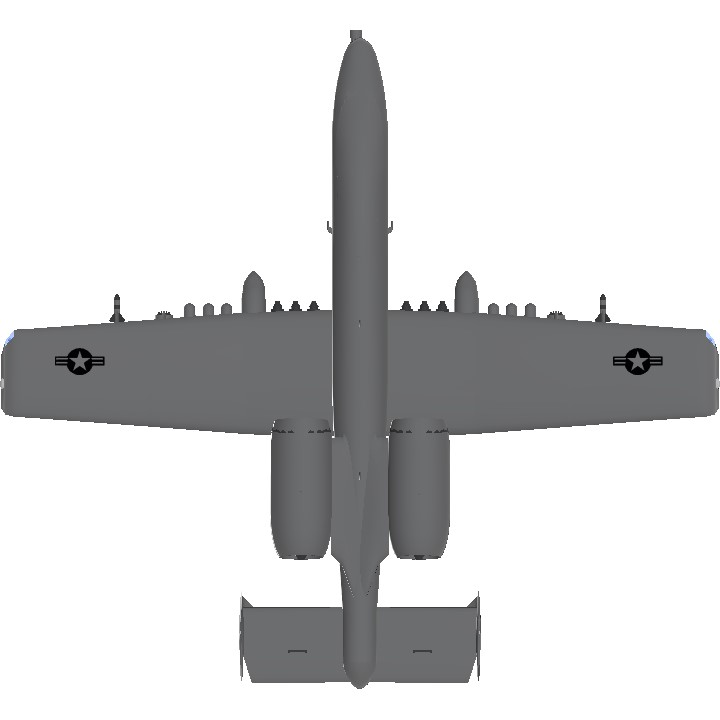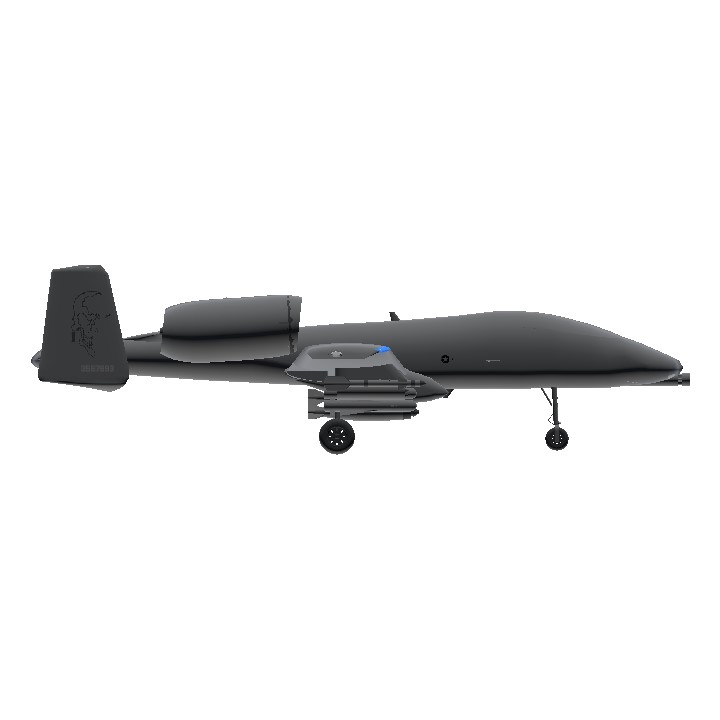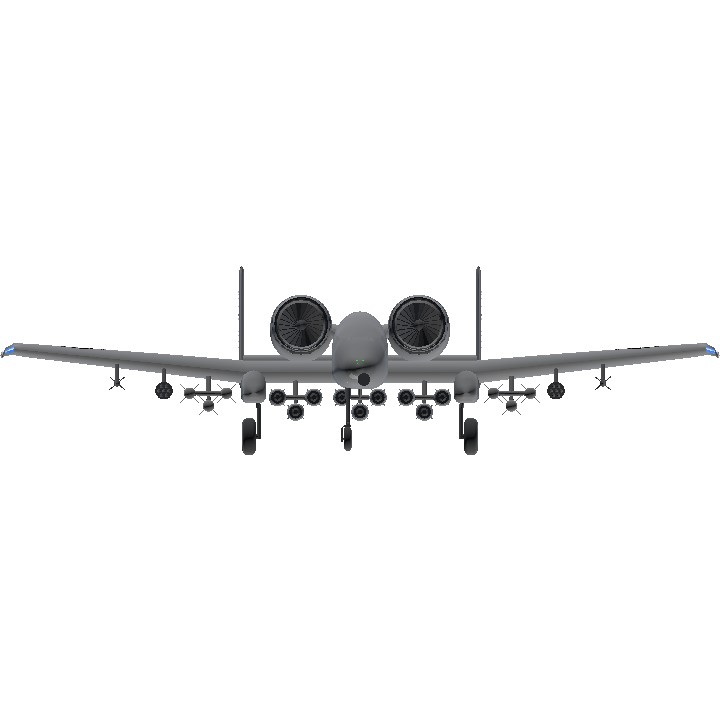QA-10F
If this plane gets more than 40 upvotes I'll make the manned version
FICTIONAL STORY
In mid-2034, after six months of combat in the Sino-American war, it became evident that the United States needed a close air support and ground attack vector. The solution? Bringing back into service the best thing a soldier wants to hear: the A-10 Thunderbolt. But there was a problem: it was too obsolete. That's when an old DARPA program was reactivated, creating the new Fairchild/Lockheed Martin QA-10F Phoenix, an attack drone based on the A-10 Warthog.
The QA-10F Phoenix was not just a simple upgrade. Equipped with advanced artificial intelligence, state-of-the-art weapon systems, and "a big cannon", it promised to change the course of the war. Unlike its predecessor, the Phoenix did not require a human pilot, allowing for riskier and prolonged operations in high-threat areas.
In the weeks following its first flight, the Phoenix began to be tested in real missions. The first major operation took place on the outskirts of Chongqing, where American forces were outnumbered. The presence of the Phoenix on the battlefield was revolutionary. Its GAU-8/A Avenger rotary cannon, upgraded with hypersonic ammunition, decimated enemy armored vehicles with surgical precision.
The soldiers on the ground, who had been under constant pressure, began to gain ground. Morale quickly rose as stories of the "iron angels" spread among the troops. Intelligence reports showed that Chinese forces were increasingly baffled and hesitant to face the new adversary.
However, the introduction of the Phoenix brought new challenges. American engineers and military strategists had to ensure that the drone's artificial intelligence was infallible and did not succumb to cyberattacks. Additionally, there was concern that China might develop effective countermeasures or even replicate the technology.
As the fighting continued, a special DARPA team was assigned to work on continuous improvements and new versions of the Phoenix. In a secret lab in Nevada, scientists were working tirelessly, developing more sophisticated algorithms and integrating new directed energy weapons.
Over time, the QA-10F Phoenix became a symbol of hope for American soldiers and their allies, marking a crucial turning point in the war. China, realizing the devastating effectiveness of the Phoenix, began to seek a diplomatic solution to the conflict, fearing that the continuation of the war could lead to a humiliating defeat.
And so, in the shadows of combat and negotiations, the Phoenix not only changed the course of a war but also ushered in a new era of autonomous warfare and artificial intelligence on the battlefield.
WEAPONS

GAU-9/B Avenger II (high velocity cannon)
9x GBU-38 (500 Pound stupid bomb)
6x AGM-65 (guided missile with l.a.s.e.r system)
2x LAU-131 rocket systems (unguided with 14 ammunition)
2x close air combat guardian missiles
CONTROLS
VTOL - FLAPS
Trim - Trim
BRAKES - Aerodynamic Brake
normal flight controls
ACTIVATION GROUPS
AG-1 Lights/motors
AG-2 unlock weapons
AG-3 empty
AG-4 empty
AG-5 empty
AG-6 eject bombs/carpet bombing
AG-7 eject ground attack missiles
PHOTOS




final considerations
Thanks to SouthJetAirwaysfor the photos
Specifications
Spotlights
- Dimkal 1.4 years ago
- XProAerospaceAircrafts 1.4 years ago
- dabestsock 1.4 years ago
General Characteristics
- Successors 1 airplane(s) +21 bonus
- Created On Windows
- Wingspan 61.0ft (18.6m)
- Length 55.8ft (17.0m)
- Height 16.0ft (4.9m)
- Empty Weight 39,658lbs (17,988kg)
- Loaded Weight 46,054lbs (20,890kg)
Performance
- Power/Weight Ratio 3.22
- Wing Loading 17.5lbs/ft2 (85.6kg/m2)
- Wing Area 2,625.7ft2 (243.9m2)
- Drag Points 10500
Parts
- Number of Parts 505
- Control Surfaces 0
- Performance Cost 1,948





any bug or addition to the project just tag me
@SkyTechAerospace there is 40 Upvotes
Pra faze-lo, você usou a blueprint do A-10?
@SkyTechAerospace I LOVE LORE
GRAHHHHHHHHHH!!!!!
@SomeSPGuyWhoLikesLore lore alert
@Karroc9522 @mapa look at the idea there
Oh god you made an AI A-10! We are all fckd
@SouthJetAirways Hellllll yeaaaah!!!
HELL YE🦅🦅🦅🦅